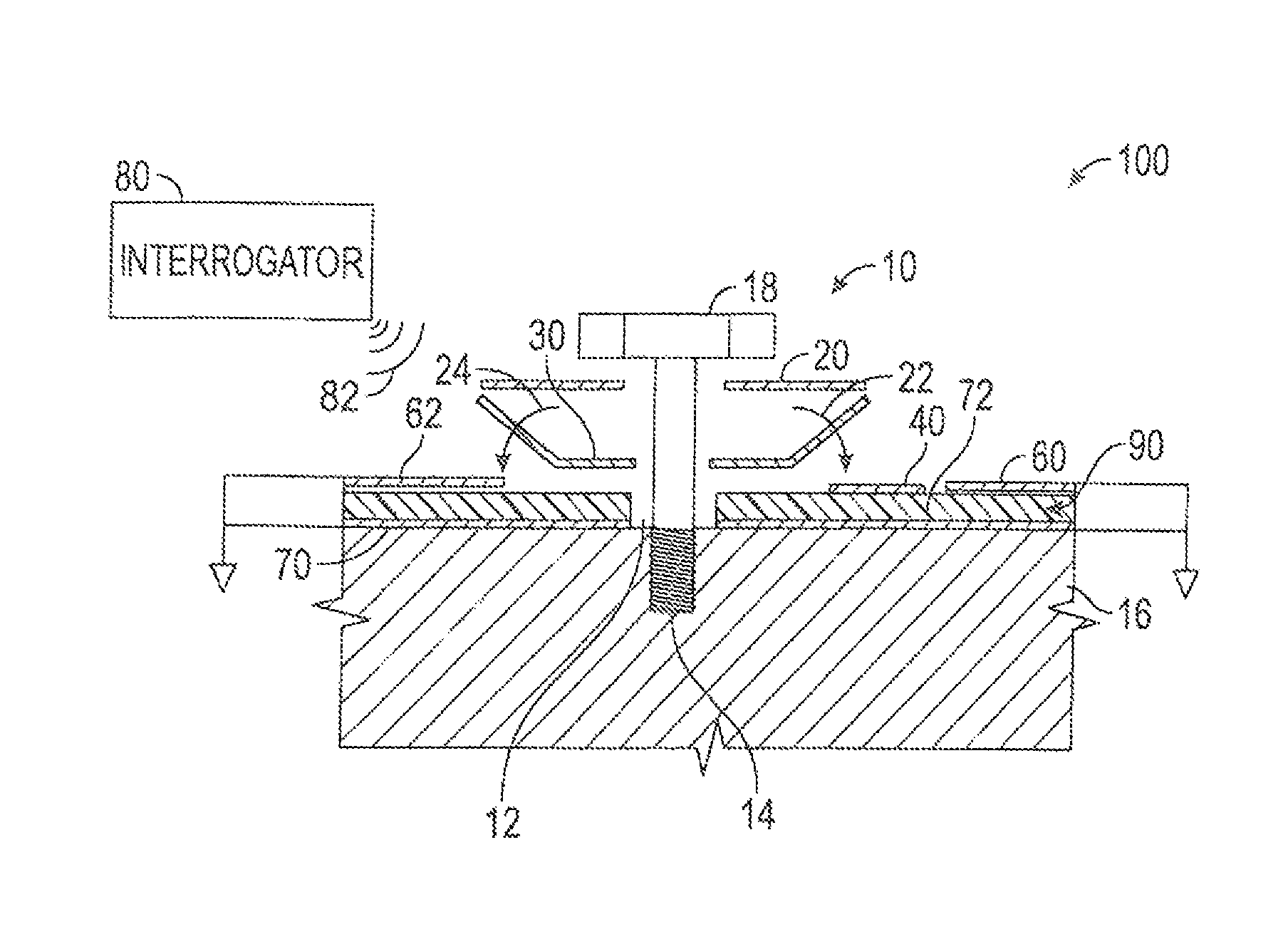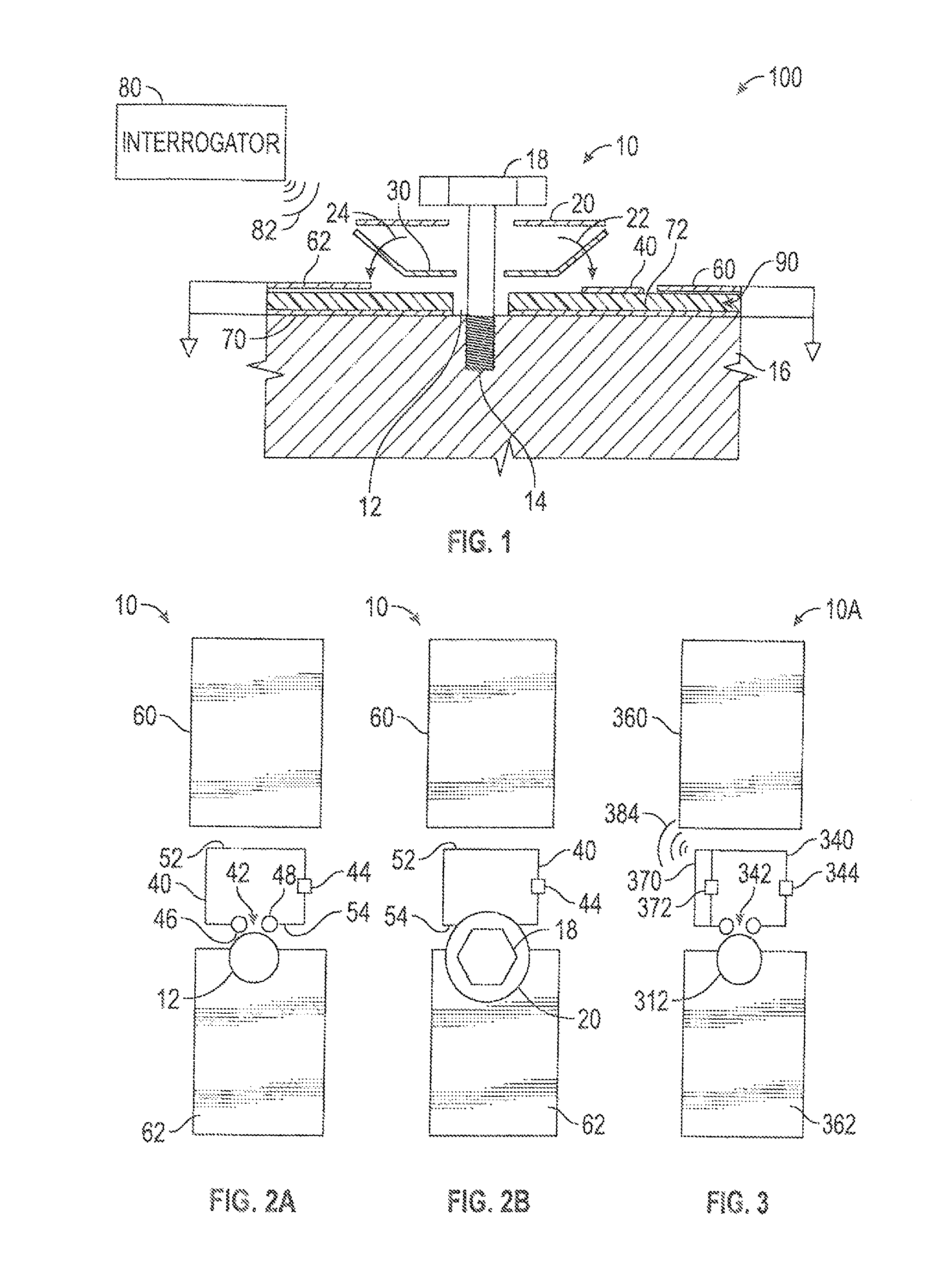RFID torque sensing tag system for fasteners
a technology of torque sensing and fastener, which is applied in the direction of screws, instruments, force/torque/work measurement apparatus, etc., can solve the problems of improper tightening, tensile fracture, galling, etc., and achieves high reliability data, cost-effectiveness, and improved safety.
- Summary
- Abstract
- Description
- Claims
- Application Information
AI Technical Summary
Benefits of technology
Problems solved by technology
Method used
Image
Examples
Embodiment Construction
[0079]Detailed descriptions of the preferred embodiment are provided herein. It is to be understood, however, that the present invention may be embodied in various forms. Therefore, specific details disclosed herein are not to be interpreted as limiting, but rather as a basis for the claims and as a representative basis for teaching one skilled in the art to employ the present invention in virtually any appropriately detailed system, structure or manner. It will be understood that the components can sometimes be shown herein in substantially conceptual form for ease of understanding. The illustrations are not intended to represent manufacturing level drawings with manufacturing level dimension precision, sizes, or details.
[0080]Referring now to the drawings and, more specifically to FIG. 1, there is shown for illustrational purposes an elevational cross-sectional diagrammatic view of one possible embodiment of RFID torque sensing tag system 100. RFID tag 10 (sometimes referred to as...
PUM
| Property | Measurement | Unit |
|---|---|---|
| excitation frequency | aaaaa | aaaaa |
| transmission distance | aaaaa | aaaaa |
| distance | aaaaa | aaaaa |
Abstract
Description
Claims
Application Information
 Login to View More
Login to View More - R&D
- Intellectual Property
- Life Sciences
- Materials
- Tech Scout
- Unparalleled Data Quality
- Higher Quality Content
- 60% Fewer Hallucinations
Browse by: Latest US Patents, China's latest patents, Technical Efficacy Thesaurus, Application Domain, Technology Topic, Popular Technical Reports.
© 2025 PatSnap. All rights reserved.Legal|Privacy policy|Modern Slavery Act Transparency Statement|Sitemap|About US| Contact US: help@patsnap.com



